Olive Oil: You Want the REAL Deal!
Here’s some news to share at the dinner table tonight (that I just read on the Mama Natural website): In April 2007, U.S. Marshals busted into storage facilities in New York and New Jersey to seize a counterfeit and potentially dangerous substance. The product they seized? Olive oil labeled as extra virgin—10,000 cases of it.
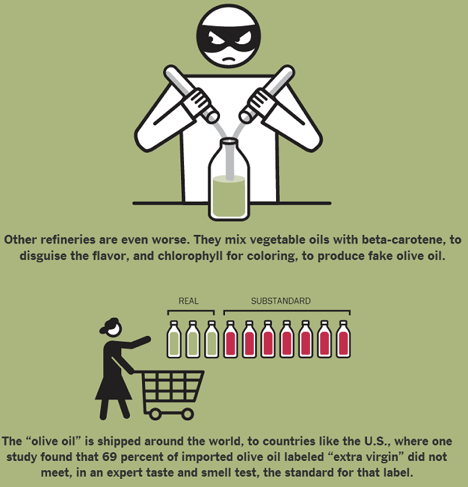
The oils were either spoiled or made from lower quality olives unfit to be labeled “extra virgin.” Even worse, some were outright counterfeits, made from soybean, hazelnut, fish oils, and other junk mixed with low grade olive-pomace oil. Not only is this ongoing scam robbing you of the true health benefits of real, high-quality extra-virgin olive oil, it’s a major safety hazard—especially to those with food allergies. The street value of this bust? Around $700,000.
With such a profit at stake, it’s no wonder that mafia rings are now selling and distributing fake olive oil worldwide. Americans alone spend $700 million on it annually. Far more valuable than other vegetable oils, olive oil is also more costly and time consuming to produce. People have been adulterating it since the time of Christ, and today, it’s the most adulterated agricultural product coming out of Europe.
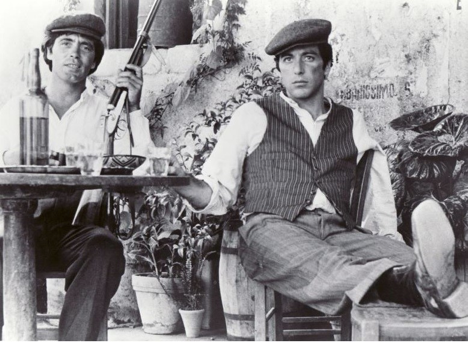
Part of what makes it so valuable is its many health benefits. The REAL stuff is rich in monounsaturated fats and antioxidants, can lower LDL cholesterol and blood pressure, can stabilize blood sugar levels, and can reduce internal inflammation.
The sad reality is, according to research scientists from the University of California at Davis Olive Center, more than two-thirds of common brands of extra-virgin olive oil found in grocery stores aren’t what they claim to be.
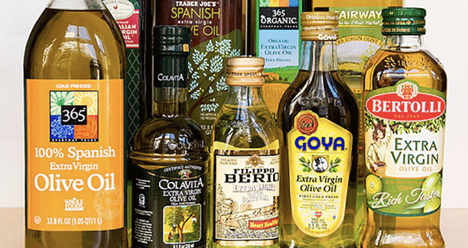
Thus, the question: Is your olive oil lying about its virginity? If you buy it at a supermarket, the odds aren’t good. It’s doubly true if you shop by price or choose “light” extra-virgin olive oil.
And don’t think you can tell the good stuff by taste, either—even master food critics and olive oil producers themselves have failed miserably in blind taste tests. Trust the research. You can’t go by taste, smell, or appearance alone.
SO HOW DO YOU KNOW IF YOUR OIL IS PURE? In a nutshell, here’s how to find the REAL deal:
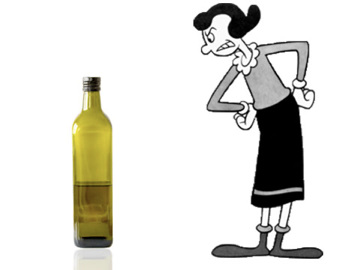
Be skeptical with labels: “Cold pressed” or “first cold pressed” labels are just lip service. Extra-virgin olive oil is typically spun with centrifuges rather than pressed, so the term is pointless today. Also stay away from anything labeled with meaningless buzzwords like “pure,” “natural,” “premium,” “made in Italy” and the like. And that “light” olive oil? Stay far, far away. This is the worst stuff on the market.
Instead, look for respected stamps of approval. Stateside, look for the California Olive Oil Council (COOC Certified Extra Virgin), and the North American Olive Oil Association (NAOOA, denoted by a red circular logo with a green olive branch). International seals to look for are the Extra Virgin Alliance (EVA), and UNAPROL (the respected Italian olive growers’ association, which stamps their recommended bottles with a “100% Qualita Italiana” label).
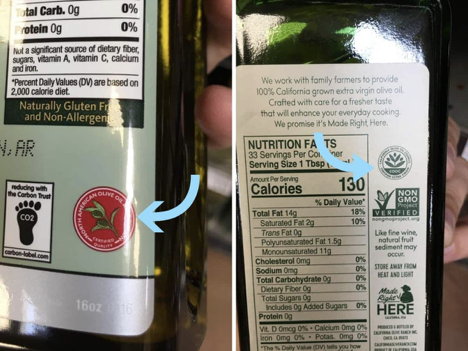
Go by location. Best bets for REAL olive oil? Australia (it has the world’s highest olive oil standards) and Chile. Both of these countries received the highest marks from the United States International Trade Commission’s extra-virgin olive oil quality report. 6ixessess, Adina, Aranda Park, Arkstone Olives, Brushwoods, and Fedra Olive Grove are just a few Australian olive oil producers (most offer online ordering). O-Live, Alonso Coratino, Kilkai, and Deleyda are a few brands from Chile (also with online ordering available).
And as referenced above, Californian olive oils carrying the COOC stamp are also highly regarded.
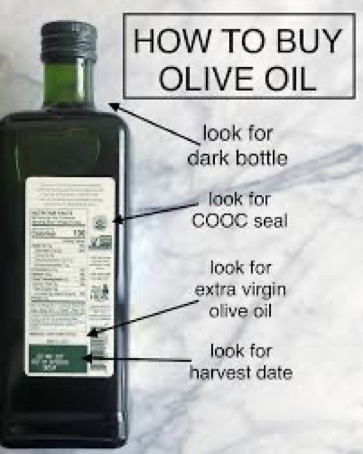
Buy in season, in smaller and dark containers. Reputable producers note harvest and production dates on their labels—always look for this. Avoid anything older than a year. And since olive oil starts to deteriorate as soon as you open it, choose smaller bottles that can be used more quickly. Then store it in the fridge or another cool spot between uses to protect it from going rancid. Also, it degrades in light and heat, so don’t buy clear bottles sitting near windows or in the sun. Buy olive oil in dark bottles or cans, where it’s better protected from degradation.
Accept that pure olive oil will cost more. A rule of thumb when purchasing—for extra virgin olive oil, a bottle of 500ml that’s 100% pure will cost you a minimum of $15.00. If it’s less, most likely its fake.
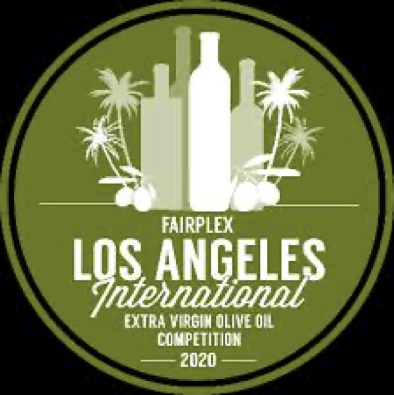
Finally, I’ll close with another way of ensuring that you’re getting true extra virgin olive oil. Use olive oil competitions as a resource. Two are the NY International Olive Oil Competition, and the L.A. International Extra Virgin Olive Oil Competition. They provide a host of certified producers who are vetted, as well as their websites and where you may find their oils at stores in your area.
blog comments powered by Disqus

The oils were either spoiled or made from lower quality olives unfit to be labeled “extra virgin.” Even worse, some were outright counterfeits, made from soybean, hazelnut, fish oils, and other junk mixed with low grade olive-pomace oil. Not only is this ongoing scam robbing you of the true health benefits of real, high-quality extra-virgin olive oil, it’s a major safety hazard—especially to those with food allergies. The street value of this bust? Around $700,000.
With such a profit at stake, it’s no wonder that mafia rings are now selling and distributing fake olive oil worldwide. Americans alone spend $700 million on it annually. Far more valuable than other vegetable oils, olive oil is also more costly and time consuming to produce. People have been adulterating it since the time of Christ, and today, it’s the most adulterated agricultural product coming out of Europe.

Part of what makes it so valuable is its many health benefits. The REAL stuff is rich in monounsaturated fats and antioxidants, can lower LDL cholesterol and blood pressure, can stabilize blood sugar levels, and can reduce internal inflammation.
The sad reality is, according to research scientists from the University of California at Davis Olive Center, more than two-thirds of common brands of extra-virgin olive oil found in grocery stores aren’t what they claim to be.

Thus, the question: Is your olive oil lying about its virginity? If you buy it at a supermarket, the odds aren’t good. It’s doubly true if you shop by price or choose “light” extra-virgin olive oil.
And don’t think you can tell the good stuff by taste, either—even master food critics and olive oil producers themselves have failed miserably in blind taste tests. Trust the research. You can’t go by taste, smell, or appearance alone.
SO HOW DO YOU KNOW IF YOUR OIL IS PURE? In a nutshell, here’s how to find the REAL deal:

Be skeptical with labels: “Cold pressed” or “first cold pressed” labels are just lip service. Extra-virgin olive oil is typically spun with centrifuges rather than pressed, so the term is pointless today. Also stay away from anything labeled with meaningless buzzwords like “pure,” “natural,” “premium,” “made in Italy” and the like. And that “light” olive oil? Stay far, far away. This is the worst stuff on the market.
Instead, look for respected stamps of approval. Stateside, look for the California Olive Oil Council (COOC Certified Extra Virgin), and the North American Olive Oil Association (NAOOA, denoted by a red circular logo with a green olive branch). International seals to look for are the Extra Virgin Alliance (EVA), and UNAPROL (the respected Italian olive growers’ association, which stamps their recommended bottles with a “100% Qualita Italiana” label).

Go by location. Best bets for REAL olive oil? Australia (it has the world’s highest olive oil standards) and Chile. Both of these countries received the highest marks from the United States International Trade Commission’s extra-virgin olive oil quality report. 6ixessess, Adina, Aranda Park, Arkstone Olives, Brushwoods, and Fedra Olive Grove are just a few Australian olive oil producers (most offer online ordering). O-Live, Alonso Coratino, Kilkai, and Deleyda are a few brands from Chile (also with online ordering available).
And as referenced above, Californian olive oils carrying the COOC stamp are also highly regarded.

Buy in season, in smaller and dark containers. Reputable producers note harvest and production dates on their labels—always look for this. Avoid anything older than a year. And since olive oil starts to deteriorate as soon as you open it, choose smaller bottles that can be used more quickly. Then store it in the fridge or another cool spot between uses to protect it from going rancid. Also, it degrades in light and heat, so don’t buy clear bottles sitting near windows or in the sun. Buy olive oil in dark bottles or cans, where it’s better protected from degradation.
Accept that pure olive oil will cost more. A rule of thumb when purchasing—for extra virgin olive oil, a bottle of 500ml that’s 100% pure will cost you a minimum of $15.00. If it’s less, most likely its fake.

Finally, I’ll close with another way of ensuring that you’re getting true extra virgin olive oil. Use olive oil competitions as a resource. Two are the NY International Olive Oil Competition, and the L.A. International Extra Virgin Olive Oil Competition. They provide a host of certified producers who are vetted, as well as their websites and where you may find their oils at stores in your area.
Sources:
- www.oliveoiltimes.com
- www.travelonspot.com
- www.snopes.com
- www.democraticunderground.com
- www.muscleandmanna.com
- www.fairplex.com
 Alice Osborne
Alice Osborne
DVO Newsletter Contributor since 2006
Email the author! alice@dvo.com
